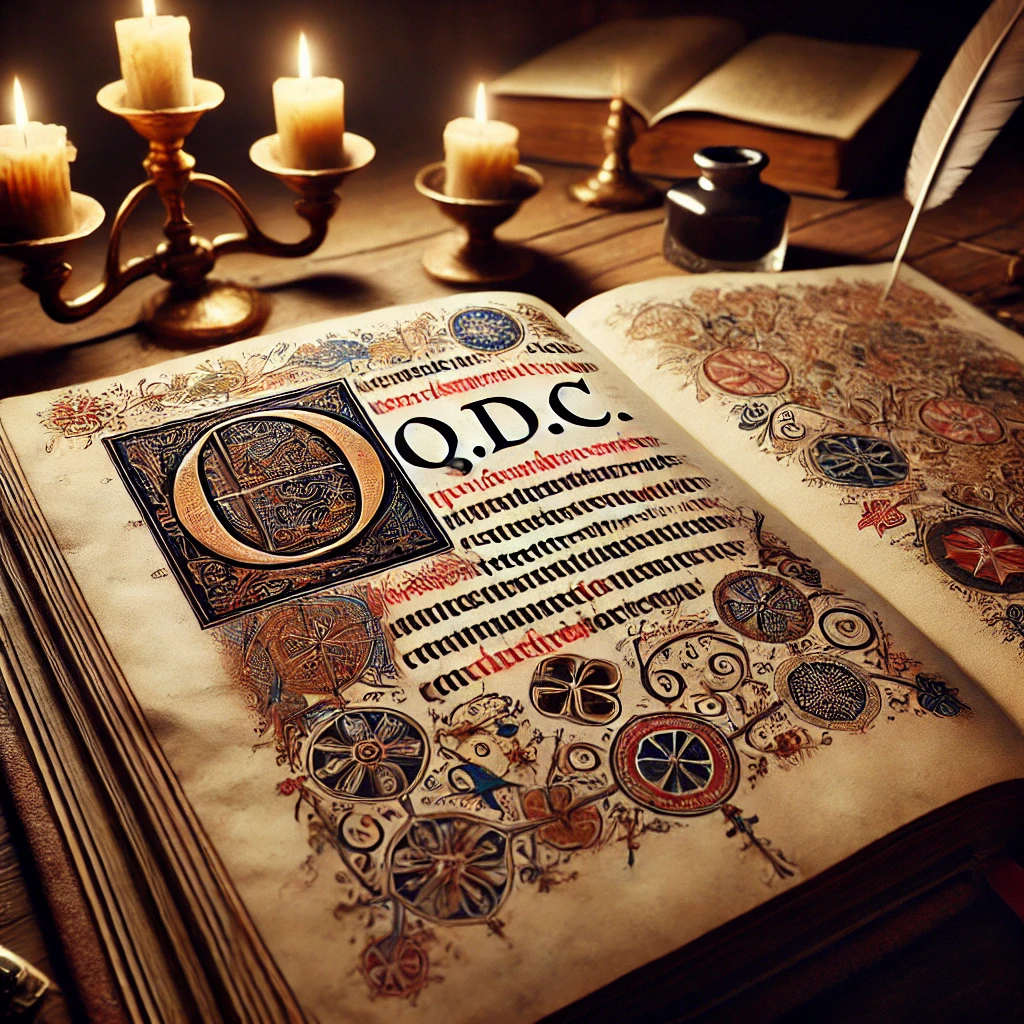Old English, the ancient form of the English language spoken between the 5th and 12th centuries, remains a subject of immense historical and linguistic importance. Within this ancient linguistic framework, various abbreviations like the Q.D.C.Old English Abbreviation play a critical role in deciphering medieval texts. These abbreviations were not merely shorthand but were pivotal in conveying complex ideas in a more compact form. Understanding them is essential for any scholar or enthusiast aiming to gain deeper insights into the cultural and religious fabric of medieval England.
Q.D.C.Old English Abbreviation: Exploring the Significance of “Quod Deus Concedat”
The abbreviation Q.D.C. stands for “quod Deus concedat,” a Latin phrase meaning “which God may grant.” This phrase commonly appeared in medieval English manuscripts, particularly within the domains of law and the church. It encapsulated a wish or prayer for divine favor, reflecting the deeply ingrained religious ethos of the time.
In historical contexts, such phrases were not only a form of blessing but also a legal and ethical stamp affirming the righteousness or hoped-for success of an undertaking. The use of Q.D.C. in a document signaled a solemn wish for divine oversight, which was a common practice given the pervasiveness of religious life in medieval society.
Q.D.C.Old English Abbreviation:: The Practical Utility of Abbreviations in Old English Manuscripts
The labor-intensive process of producing manuscripts in Old English times necessitated the use of various abbreviations. Scribes, tasked with the transcription of lengthy religious and legal texts, adopted abbreviations like Q.D.C. to economize on both time and parchment space. This practice was not only practical but also an art form, requiring a deep understanding of both language and context to use appropriately.
Q.D.C. and similar abbreviations were typically placed at crucial junctures in texts, such as the conclusion of a legal document or the end of a manuscript, serving as a final benediction or seal of divine approval. This placement was strategic, underscoring the gravity and solemnity of the text’s content.
Q.D.C.Old English Abbreviation: The Role of Q.D.C. in the Wider Context of Old English Abbreviations
Abbreviations in Old English manuscripts went beyond mere shorthand. They were embedded with significant cultural, religious, and legal implications. For instance, a scribe’s choice of abbreviations could reflect the manuscript’s intended audience or the text’s purpose. Understanding these nuances is key to interpreting these ancient documents accurately.
The study of such abbreviations provides insights not only into the language but also into the societal structures and beliefs of the time. They allow modern readers to connect with the medieval mindset, offering a window into the complexities of early English society.
Q.D.C.Old English Abbreviation: Linguistic Precision in Manuscript Scribing
- Efficiency in Communication: Abbreviations like Q.D.C. allowed scribes to convey complex theological and legal concepts succinctly.
- Training and Skill: Mastery of abbreviations required extensive training, reflecting a scribe’s skill and understanding of both language and doctrine.
- Standardization Issues: Despite their utility, the lack of standardization in abbreviations could lead to varying interpretations among different regions or schools of scribes.
Cultural Reflections through Language
- Mirror of Society: The use of religious abbreviations such as Q.D.C. highlights the pervasive influence of Christianity in medieval English society.
- Documentary Significance: Each abbreviation used in a manuscript can offer clues about the text’s purpose and its intended audience.
- Evolution of Expressions: Over time, these abbreviations evolved, mirroring changes in language, law, and religious practices.
The Religious Overtones in Old English Texts
- Divine Intercession: Phrases like “quod Deus concedat” illustrate the common medieval belief in divine intervention in daily affairs.
- Sacred Texts: Religious manuscripts often included such phrases to invoke God’s blessing or to emphasize the sacred nature of the texts.
- Liturgical Usage: Abbreviations were also prevalent in liturgical manuscripts, used during worship and religious ceremonies, indicating their ritual importance.
The Impact of Abbreviations on Modern Linguistic Studies
- Philological Research: Understanding these ancient abbreviations aids philologists in reconstructing Old English and its grammar.
- Codicology and Paleography: Scholars in these fields analyze manuscript contexts and handwriting, where abbreviations provide essential data points.
- Linguistic Legacy: Modern English still retains shortened forms derived from medieval abbreviations, influencing contemporary abbreviation usage.
Conclusion
The Q.D.C.Old English abbreviation is more than just a linguistic relic; it is a testament to the intertwined nature of language, religion, and law in medieval England. For scholars of Old English, understanding such abbreviations is crucial for a complete and nuanced interpretation of ancient texts. As we continue to explore and study these abbreviations, we gain not only linguistic knowledge but also a deeper appreciation for the historical and cultural contexts that shaped early English society.

